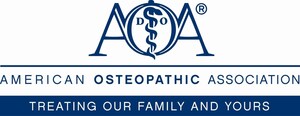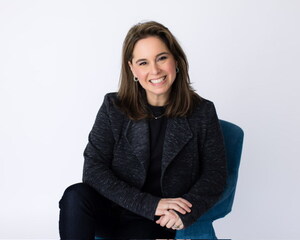CHICAGO, Oct. 30, 2018 /PRNewswire/ -- The American Osteopathic Association warns that the continuing push to grant independent practice rights to non-physicians may force patients with complex health conditions to see less qualified health care providers instead of doctors in their communities.
In response to the physician shortage, many states are carving doctors out of patient care, an AOA policy analysis found. The trend has the potential to create different standards of care, particularly for rural and low-income patients, who may not know their health care provider is not a fully licensed physician.
"Often we find that patients are unaware of their health care provider's credentials and there is a clear need for transparency, particularly when it comes to the management of complex patients in a primary care setting. It's important for legislators to understand the difference in qualifications and why these differences matter," said William S. Mayo, DO, president of the American Osteopathic Association.
This summer, the American Association of Nurse Practitioners, which represents nearly 250,000 nurse practitioners in the United States, announced a $2 million advocacy campaign to push for independent practice rights in more states. Meanwhile, the American Academy of Physician Assistants is calling for the elimination of legal requirements for PAs to maintain a collaborative relationship with a physician in order to practice.
Additional legislation seeking to expand the independent practice rights of non-physician clinicians is expected to be introduced in several states this year.
Studies have shown that health care professionals with less training and education cost the U.S. health care system more. Specifically, researchers found that nurse practitioners make lower quality referrals to specialists, expose patients to increased radiation by ordering more diagnostic imaging and prescribe more drugs than physicians. Also physicians are often needed to fix problems that could have been minimized or prevented if a patient's care had been supervised from the outset.
Currently, 22 states and the District of Columbia allow nurse practitioners to diagnose patients, order and interpret diagnostic tests, and prescribe medication, including controlled substances like opioids, without any physician involvement or oversight.
"It's clear that groups of non-physicians are using the physician shortage as a lever to push states into letting them practice medicine independently without attending medical school. While physicians highly value the care they provide, and the system clearly needs them, it is dangerous to substitute nurse practitioners and PAs for doctors," Dr. Mayo said.
Physician (MD or DO) |
Nurse Practitioner |
Physician Assistant |
|
Length of graduate education |
4 years |
2-4 years |
2-2.5 years |
Years of residency training |
3-7 years |
None |
None |
Total number of patient care training hours |
12,000 to 16,000 hours |
500-720 hours |
2,000 hours |
In addition to the length and depth of their training, physicians must pass a rigorous licensing exam series and maintain comprehensive malpractice insurance. They may also be required by employers or insurers to pass additional exams for board certification in their practice specialty.
While the AOA values the unique contributions of all health care professionals, it supports a team-based approach to medical care. The physician-led medical model ensures that professionals with complete medical education and training are adequately involved in medical decisions and patient care. In addition, the team-based model has been shown to improve patient outcomes and reduce costs.
"What we need is uniformity in defining the scope of practice for non-physicians. Patients and practitioners deserve clarity and consistency on the limits of each type of license," Dr. Mayo explained.
About the AOA
The American Osteopathic Association (AOA) represents more than 137,000 osteopathic physicians (DOs) and osteopathic medical students; promotes public health; encourages scientific research; serves as the primary certifying body for DOs; and is the accrediting agency for osteopathic medical schools.
To learn more about DOs and the osteopathic philosophy of medicine, visit www.DoctorsThatDo.org.
SOURCE American Osteopathic Association
Related Links
WANT YOUR COMPANY'S NEWS FEATURED ON PRNEWSWIRE.COM?
Newsrooms &
Influencers
Digital Media
Outlets
Journalists
Opted In





Share this article